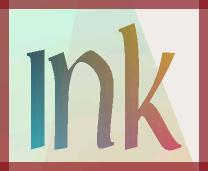|
SCOUG OS/2 For You - Oct 1999
I don't know how many folks have noticed, but TrueSpectra has got a heck of a deal going through Dec 31, 1999. As the company has moved on to web based software develop-ment tools, they have decided to allow individuals to download copies of Photo>Graphics absolutely free! The file is tspg202s.zip, and is a little over 6 Mb in size. Find it under Support at http://www.truespectra.com This is a really amazing find, since I think I spent about $100 a couple of years ago for the same software. For those of you who don't know or remember, Photo>Graphics is a great complement to traditional bitmap image editing programs like ColorWorks or PhotoShop. As I recall, it uses a vector graphics engine called ColorWave, along the lines of Corel's Draw programs. What does this mean? Well, when you use a bitmap editor, there are a couple of caveats. First, you cannot improve on the original image size; if it is a 500k .bmp file, then that's the maximum resolution that you are going to have, and if you resize the image to make it bigger, you simply lose detail the more you push the image. Second, with a program like ColorWorks, whenever you edit the image in memory, you are creating a new image of the same file size as the original. So, if you make three edits to a 10 Mb file, you are now chewing up 30 Mb of memory. Thus the constant complaints about how much RAM it takes to use a bitmap editing program with large file sizes. The vector concept is like working with postscript -- you are using a mathematical model to create primitives like curves, circles & such independent of pixels. The practical result is that the file sizes are usually quite a bit smaller, edits are handled as layered overlays to the original image, and you can determine output size at print time. So, if you want to create an image, modify it, and then bump it up to poster size for your Epson 3000 printer, Photo> Graphics has a lot of possibilities. Some people like the ColorWorks concept that lets you work at the pixel/bit level. Others like vector engines like Photo>Graphics. For some reason, it took me a while to figure out the TrueSpectra way, but a lot of our members found this program way more intuitive and easy to learn than ColorWorks. Anyhow, with this special deal, there is no good reason not to have the best of both worlds. Shifting to Maul, the desktop publishing program, I haven't had time to really wring it out and see how good it really is. In a limited trial, the program seems to have a lot of potential, but I'm having a bit of difficulty with the learning curve. The good news is that Maul is a bitmap level page oriented publisher, so you have control over your printed output at a very precise level of control. To use the program you must have a printer installed, because the fine control over pages (such as margins and gutters) is directly linked to your printer. The program works with page style sheets, and frames. You can create frames within frames, and associate a "handler" or editor for any frame. For example, you can have a graphic frame with a bitmap image associ-ated with the bitmap image handler, and a text frame associated with the text handler. The 'handlers' are basically object editors. While there are a number of inf online files, there is no real tutorial, so I'm finding the learning curve for this program a bit steep. More later as I figure it out (he hopes :-). A couple of printer notes. Lexmark has updated OS/2 drivers for the new Z51 1200 dpi printer. I'd love to hear from anyone who's bought one. Also, at Warp Expo West, I talked to a couple of folks who have HP inkjet printers they say work quite well with the latest IBM Omni drivers. Since HP stopped supporting OS/2 this is news to me, and I would really appreciate it if anyone with an HP color inkjet could let me know how they are doing with the OMNI drivers and graphics images like photos or line art. (Remember, I can't afford to buy all this stuff.) Feedback is always welcome. You can reach me at Tony@scoug.com
By day, Tony Butka is a bureaucrat for Los Angeles County. In his other life he lives in a loft surrounded by computers, printers, and a host of vinyl records.
P.O. Box 26904 Santa Ana, CA 92799-6904, USA Copyright 1999 the Southern California OS/2 User Group. ALL RIGHTS RESERVED. SCOUG, Warp Expo West, and Warpfest are trademarks of the Southern California OS/2 User Group.
|









